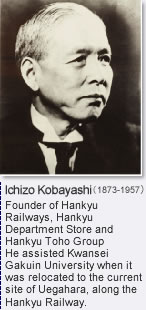
The economic development of modern Japan is often referred to as "government-led capitalism." However, the role of the government should not be overemphasized. As exemplified by many failures of government-operated factories of the Meiji Era (1868 – 1912), the policy of direct intervention by the Japanese Government in promoting industries was far from successful. The textile industry, a leading industry of pre-war Japan, was spawned from the private sector rather than from government-operated factories. Even after WWII, there have been few cases of direct development policies for selected industries, and such cases, if any, tended to produce unfavorable results. We need only look at the Japanese automobile manufacturers who have succeeded in gaining competitive advantage in the midst of severe competition in the world market, while other industries that were long protected by the "convoy" style of administration by the Japanese Government have been struggling against global competition in recent decades. The fundamental driving force propelling an industry forward has always been entrepreneurs and private companies. Economic development in Japan since the Meiji Era has been achieved essentially within the framework of the market economy.
Osaka provides a good example. Before the Meiji Era, Osaka flourished as the "Kitchen of the Country." However, after the Meiji Restoration, the city was on the verge of decline and extinction. It was Tomoatsu Godai, a former samurai of Satsuma (current Kagoshima Prefecture) who resigned his position as a high bureaucrat in the Government, introduced the new business joint venture model of to the city, stimulated merchants in Osaka to regain vitality, and led their human and material resources in a new direction.
Denzaburo Fujita from Choshu (current Yamaguchi Prefecture) and Jutaro Matsumoto from Tango (current Kyoto Prefecture), both venture capitalists, came to Osaka with no resources and started successful new concerns in the textile, banking and railway industries in Osaka. Takeo Yamanobe and Kyozo Kikuchi were engineer-entrepreneurs who studied advanced technologies overseas. A new form of commercial concern, the "trading company", also appeared in Osaka in relation to the textile industry.
After the Russo-Japanese War (1904 - 1905), Osaka was further developed as a modern industrial city and the population expanded rapidly. Ichizo Kobayashi tried to manage the railway business not only as a high speed transportation system, but also in association with other infrastructures and businesses, such as residential developments, educational, leisure, and cultural facilities, and shopping centers (terminal department stores). His ideas supplied a business model for managing private railways that has been followed ever since.
In Japan's cities the mass-consumption society had appeared, and numerous new products which responded to society's needs appeared in rapid succession. Many well-known food and product lines originated in Osaka, such as Akadama port wine, Craypas, thermos bottles, omelet rice, curry rice and Glico with premiums,cameras, Calpis, etc. It was also the dawn of the era of electricity. Konosuke Matsushita, Toshio Iue and Tokuji Hayakawa, the "Three Major Entrepreneurs of Home Electric Appliances" started their respective businesses in the early 20th Century.
Even after WWII, countless numbers of innovations and inventions were born in the Osaka area, such as instant noodles, prefabricated houses, vinylon, electronic calculators, canned coffee, capsule hotels, auto-focus single-lens reflex cameras and automatic ticket checkers. Osaka has always been a city marked by continuous and vigorous entrepreneurial activity.
What are the reasons that brought such energetic entrepreneurial activities to Osaka? Who were those vigorous entrepreneurs? Finding answers to these questions does not serve simply to satisfy nostalgia, but can provide us with wisdom that can be utilized in the contemporary business world.
|